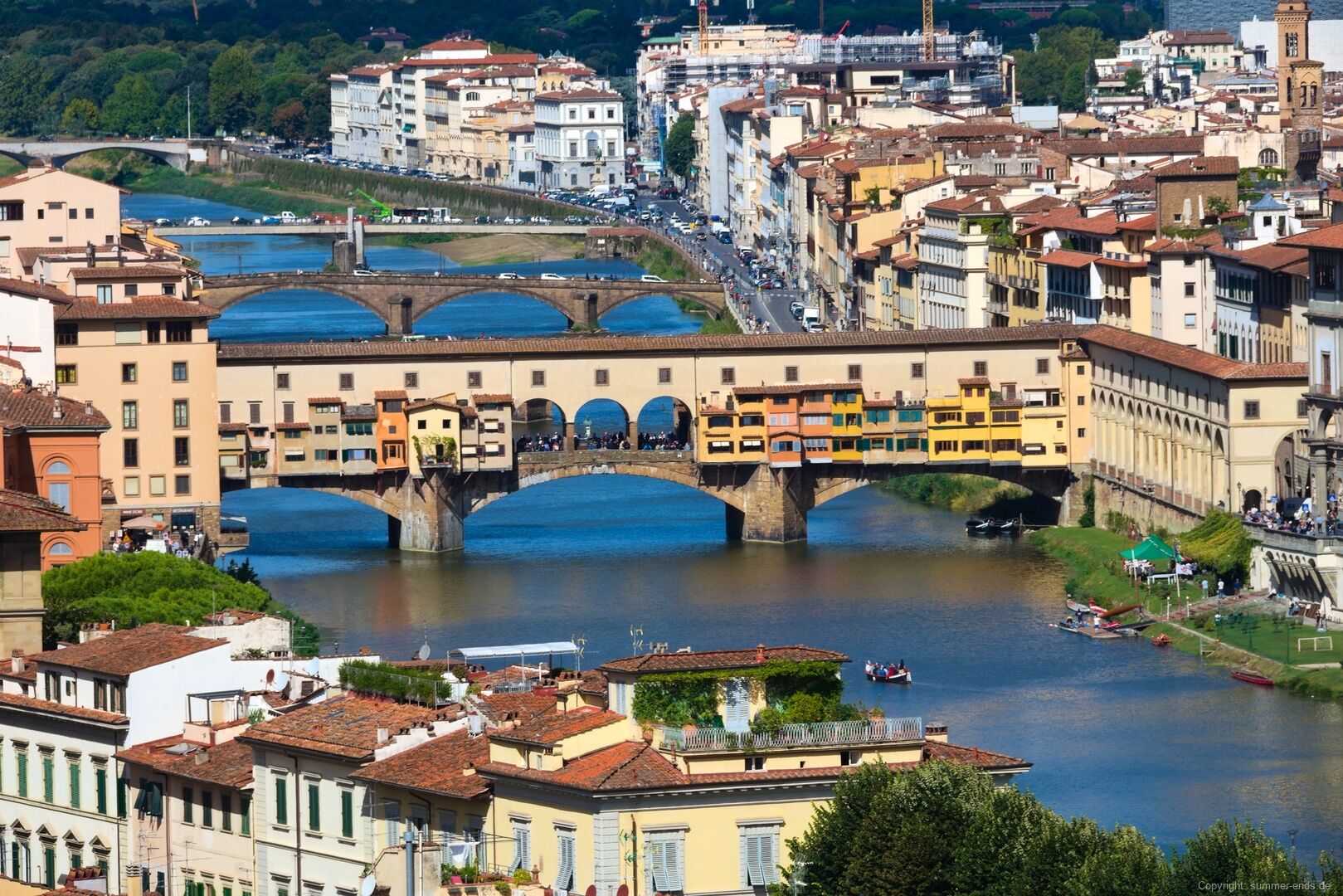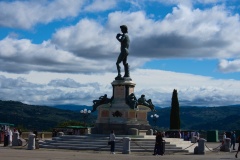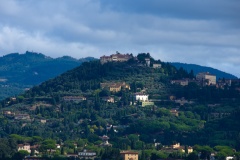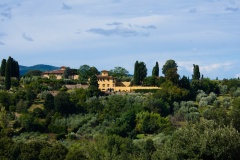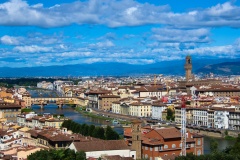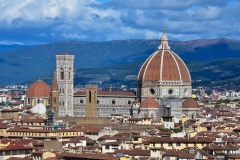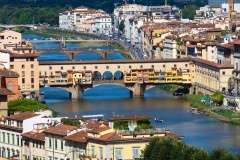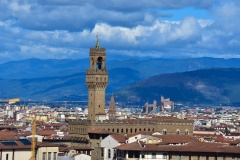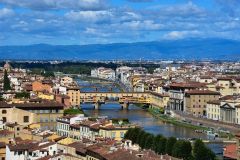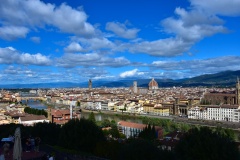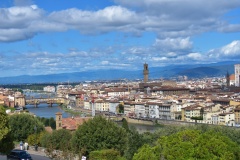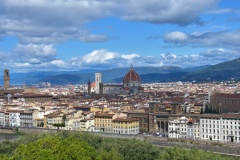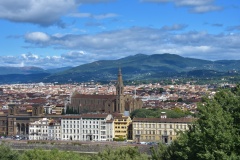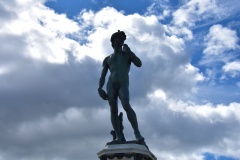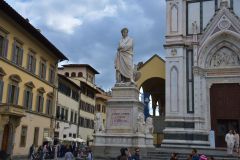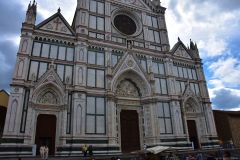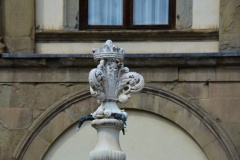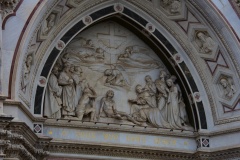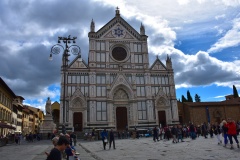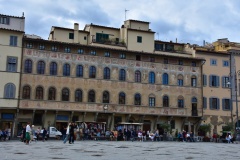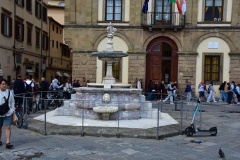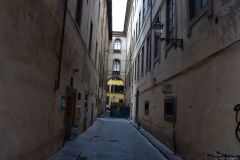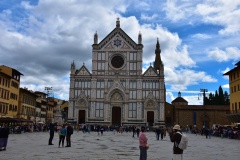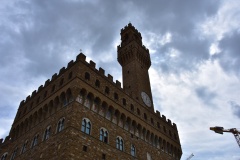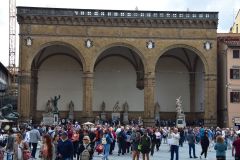Florence is a historic city in central Italy and the capital of the Tuscany region. It is situated in the Arno River valley, surrounded by rolling hills that form part of the northern Apennine landscape. Florence is internationally recognized as one of the most important cultural and artistic centers in Europe and is widely regarded as the birthplace of the Renaissance. The city’s urban fabric is characterized by dense historic architecture, monumental public spaces, bridges across the Arno, and a compact historic core that contrasts with surrounding suburban and rural areas. Florence functions as a major center for tourism, education, art conservation, and regional administration, while also maintaining a strong identity shaped by its historical continuity and landscape setting.
History
Florence was founded as a Roman colony, Florentia, in the 1st century BCE, strategically located along key trade routes in the Arno valley. Following the decline of Roman authority, the city experienced periods of contraction and instability during the early Middle Ages, but gradually re-emerged as a regional center of trade and craftsmanship. By the 11th and 12th centuries, Florence had developed into a powerful city-state, driven by commerce, banking, and textile production.
The height of Florence’s historical significance occurred during the 14th to 16th centuries, when it became the epicenter of the Italian Renaissance. Patronage by influential families, most notably the Medici, supported unprecedented developments in art, architecture, science, and political thought. Figures such as Leonardo da Vinci, Michelangelo, Brunelleschi, Dante, and Machiavelli were closely associated with the city, shaping its global legacy.
Following periods of political change, foreign rule, and incorporation into the Grand Duchy of Tuscany, Florence became part of the unified Kingdom of Italy in the 19th century and briefly served as the national capital from 1865 to 1871. In the modern era, Florence has focused on preserving its historic fabric while accommodating tourism, education, and contemporary urban life, maintaining its role as a symbol of European cultural heritage.
Geology
Geologically, Florence lies within the Arno Basin, a tectonic and sedimentary depression formed during the Neogene period as part of the Apennine orogenic system. The basin is filled with fluvial and lacustrine sediments, including clays, sands, and gravels deposited by the Arno River and its tributaries over millions of years. These sediments create a relatively flat valley floor on which the historic city developed.
The surrounding hills consist mainly of sedimentary rocks such as sandstones, marls, and limestones associated with the Tuscan units of the Apennines. Differential erosion of these formations has produced the gently rolling topography that frames the city.
The Arno River has played a central role in shaping Florence’s landscape and history, providing water resources, transport routes, and fertile soils, while also posing a recurrent flood hazard. The most significant modern flood occurred in 1966, causing extensive damage to cultural heritage and highlighting the close relationship between the city, its geology, and fluvial processes.
Things to See
Florence contains an exceptional concentration of cultural, architectural, and artistic landmarks. The historic center, designated a UNESCO World Heritage Site, includes the Cathedral of Santa Maria del Fiore with Brunelleschi’s dome, Giotto’s Campanile, and the Baptistery. The Uffizi Gallery and the Accademia house some of the world’s most significant Renaissance artworks.
The Ponte Vecchio spans the Arno River and illustrates the city’s historic relationship with commerce and river crossings. Palazzo Vecchio represents Florence’s political history as a city-state, while numerous churches, palaces, and squares reflect successive architectural periods.
Beyond the historic core, viewpoints such as Piazzale Michelangelo and San Miniato al Monte provide panoramic views across the city and the Arno valley. Museums, libraries, and workshops dedicated to art conservation and craftsmanship further reflect Florence’s enduring role as a center of culture, learning, and heritage preservation.

